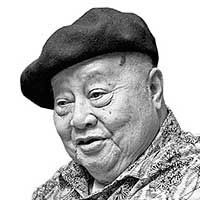The joy of teaching

I have always considered teaching as the second noblest vocation, motherhood being the first. It can also be the most satisfying and the most trying. I know – I was once a teacher too.
In 1965, when I returned to Manila from Sri Lanka where I had worked for a couple of years, I met with Prof. Antonio Isidro for dinner. He was then dean of the University of the East’s Graduate School of Education, and later became President of the State University in Marawi.
Our conversation drifted to the problems of culture change. Having by then travelled extensively in the Philippines and Asia, I recounted some of my observations, starting with what I had seen in the country – why Ifugaos were leaving their domain, how geography and environment influence a particular way of life, even the arts. It was then that Dean Isidro told me to teach at his college. I told him I did not even finish college. He said all I had to do was to tell the students what I had told him.
Since then, I have taught a course on culture change at the University of Santo Tomas, La Salle, the University of California at Berkeley, and lectured on the subject in many schools and elsewhere. I made a syllabus that clearly defined the objective of the course – to know ourselves and our country. I brought back to mind the teachers who influenced me the most – first, my own mother; remember always that the home is the first school in life, and in grade school, Miss Soledad , who urged me to read, and in college, my writer professor, Paz Latorena, and the Spanish Dominican Juan Labrador, who impressed upon me the importance of clarity in thinking and writing.
As a writer, I have always tried to be observant and also curious. Way back in the 1950s, I was travelling all over the country, getting to know our geography, history, and ethnicity. I did a lot of walking in the Cordilleras, appreciated how hard our mountain people worked, and wondered how the Ifugaos could maintain those terraces. I knew even then that many of them would leave.
I saw how infertile land made the Ilocanos and the Cebuanos so industrious. And how the two great religions, Hinduism and Buddhism, shaped the cultures of Asia, and how Catholicism kept us from developing classical cultures similar to those of our Asian neighbors. I realized also how religion shapes not just social structures but economic structures as well, the great divides in thinking and the unities evoked by nationalism. But above all these divisions, that the universal aspiration for dignity and justice is in every one.
I had no training in pedagogy and one time, a professor friend from Diliman monitored my class for a week and said I was using the Socratic method. I read Socrates in college, of course, but I had not realized he had a method. My friend said, you are always asking questions.
As a journalist and creative writer, asking questions is almost instinctive – questions that require definitive answers, questions that elicit more questions. With my syllabus, my lectures were structured like short stories, with beginnings and plots that lead to conclusions and more questions. I always I tried to infuse my lectures with tension to keep the students awake, to incite their curiosity, to make them think and resolve the questions themselves.
I remembered my mother’s advice about patience and industry. I read Gilbert Highet’s The Art of Teaching, how he urged teachers to repeat and repeat, how knowledge becomes a mantra almost. I often interrupted my lectures as I stumbled across fresh insights, and got my students into arguments among themselves whenever I could.
I spoke with my class about the similarities in traditions across cultures. In Sri Lanka, for instance, the playwright Ediriweera Sarachandra revived and modernized Sinhalese drama – what Filipino dramatists themselves could do with our folk moro-moro or comedia. High up in the Himalayan kingdom of Bhutan, I saw girls perform a harvest dance that was an exact copy of the Manobo harvest dance and the dugso of Bukidnon – the girls forming a semi-circle around a bonfire, chanting and stomping their feet, strings of small bells wrapped around their ankles.
The imagination is infinite but knowledge is not. How can I ever explain those Tamil villagers, including children, dancing barefoot across a plot of red-hot stones. I also explained why we Filipinos have so little memory; if we had, the Marcoses would not be back in power.
In teaching, I found out how much knowledge I had collected through the years and from my many travels. But at the same time, I also was aware how little I knew, and teaching, which I really enjoyed was also, for me, a continuing learning process.
But I had to give up teaching, which had given me so much joy. Teaching required so much discipline and interfered with my own personal schedules, my writing, and particularly the travels that I also enjoyed. After a few years, I left La Salle. But it was also in this university where I was truly fulfilled.
Once, at the start of a trimester, as I was going over the class cards of my new students, I recognized two who were in my last class. I really never failed any of my students. I told myself that even if they were not all that bright, it was very unlikely they would kill a person, unlike if they were medical students. I asked the two students why they were repeating – and paying for – a course they had already taken. They told me happily that they had learned so much in my course, and they were back to learn more.
- Latest
- Trending



























